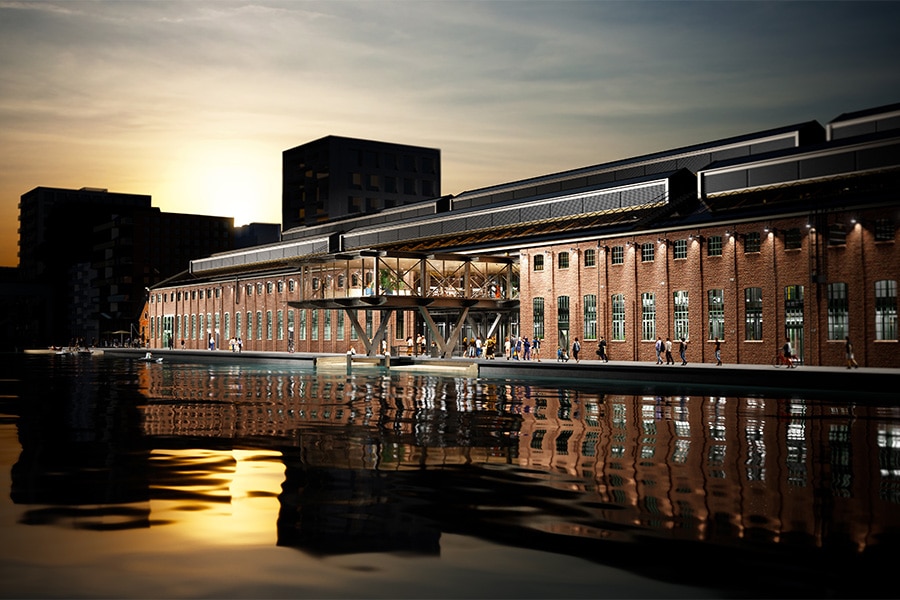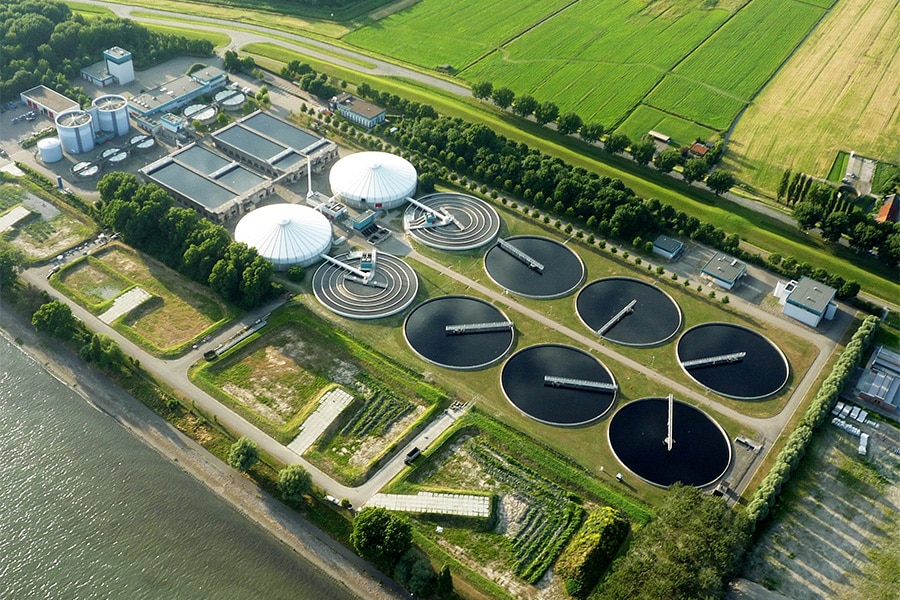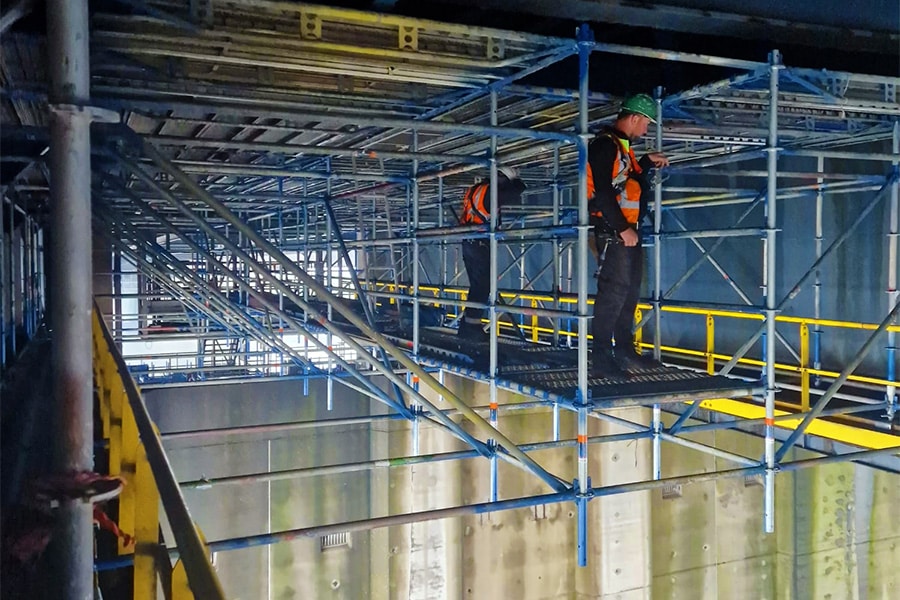
Cycling through the trees over corten steel bridge
The Limburg bicycle route network has been raised to an even higher level in recent months. Literally and figuratively. After Cycling through the Water - in Bokrijk - Toerisme Limburg opened Cycling through the Trees, a brand new cycling and walking experience at a height of 10 m through the treetops in Bosland. The new bicycle path is on the bicycle route network and is located near bicycle junction 272 on the Pijnven, in Bosland, Hechtel-Eksel. Steel construction company Smulders was responsible for the construction and installation of the imposing structure. It was designed by BuroLandschap in collaboration with De Gregorio & Partners architects.
Cycling through the Trees (FDDB) is a realization of Tourism Limburg and the result of a close collaboration. It is a SALK project with financial support from LSM, the municipality of Hechtel-Eksel, Tourism Flanders and the province of Limburg, and came about in close consultation with Bosland and Natuur en Bos. The new bicycle project immediately proved to be a hit. In the first six weeks after its official opening on June 14, the bridge received more than 100,000 cyclists.
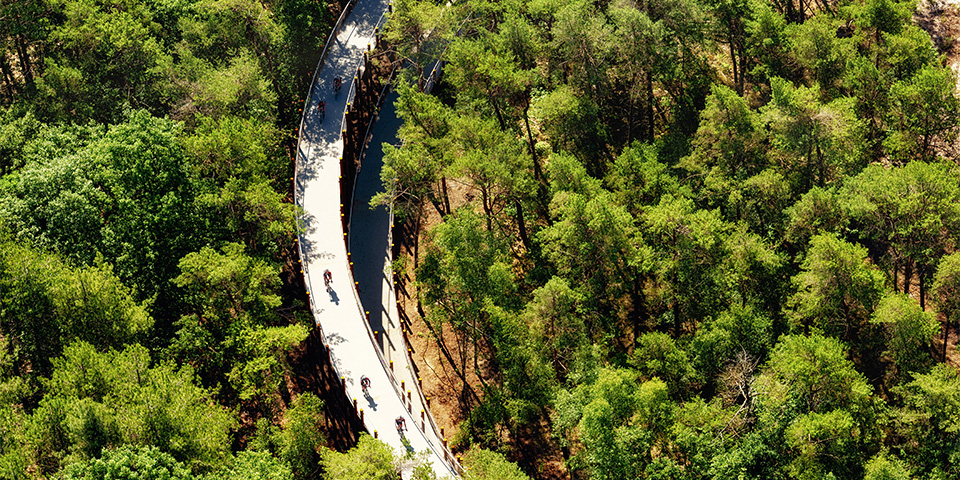
"Since the opening weekend, bicycle rentals were running at full speed, the terraces in the bicycle cafes were full and this not only in Hechtel-Eksel, but also in the surrounding municipalities," says Igor Philtjens, deputy and chairman of Tourism Limburg. "So it certainly looks like FDDB will follow in the footsteps of the successful Cycling through Water (FDHW), the first realization of Tourism Limburg in this series of innovative cycling experiences. Both FDHW and FDDB have incidentally been included by the International Bicycle Architecture Biennale 2019/20. Two of the 15 designs are thus from Limburg. Such things strengthen our image as the cycling province par excellence."
360° experience
The new bicycle path through the trees adds a unique experience to the Limburg bicycle route network. Cyclists ride for 700 meters over a bicycle bridge - a double circle with a diameter of 100 m - that rises gradually (3 to 4 %) to 10 m in height, only to descend again with the same gradient. Thus, cyclists and walkers get a sensational 360° experience. To ensure safety, cycling occurs in one direction and a subtly present wire mesh with a handrail is provided. The path is also sufficiently wide (3 meters) to allow two cyclists to ride comfortably side by side. The generous width of the path combined with the limited gradient makes Cycling through the Trees accessible to all.
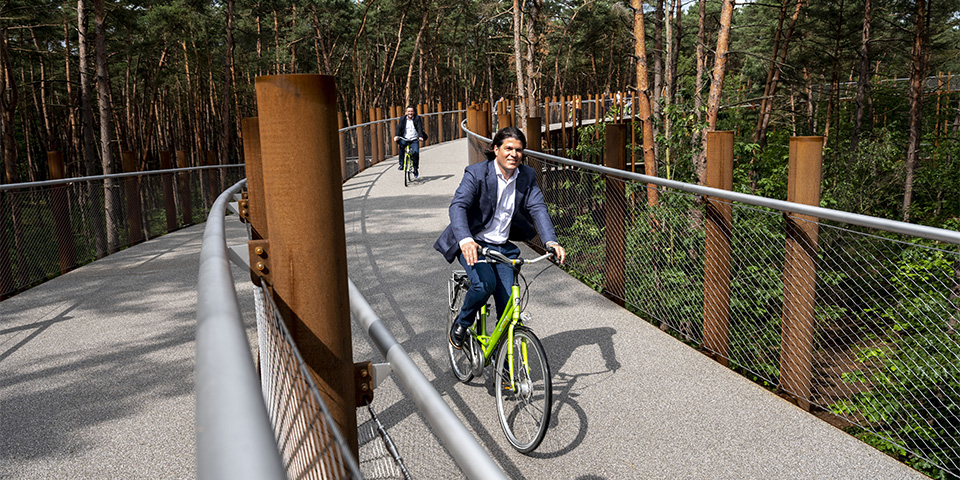
Corten steel was chosen as the material for the bridge. "In a nutshell, the concept consists of lots of slender columns made of corten steel. In order to mimic the appearance of pine trees," said Joost Van Dun, project manager at Smulders. "The bridge deck itself has a sound-damping polymer wear layer, infused with natural stone grit for more grip. The concept in itself is quite simple and shines in its simplicity, but therein lies also the difficulty. For example, the entire construction does not have a single diagonal line. But of course the stability has to come from somewhere. A very strong connection between the columns and the bridge deck was crucial, and that worked out well."
Coupler developed
Smulders also faced quite a challenge in terms of foundations. Joost Van Dun: "The concept also determined that we had to work with small screw piles of 2.5 to 3 m and with a diameter of 11 to 12 cm. The bridge was built on these piles, about 450 in total. Because of the purely vertical placement, the tolerances between column and bridge deck were almost non-existent. The bolt had to be inserted very tightly and the piles had to be drilled almost perfectly into the ground. Otherwise the columns would not come out at the right point. We therefore developed a special coupler made of steel that allowed us to accommodate a placement deviation of up to 3 cm in all directions. In terms of size, this was a relatively small project for us, but it was by no means everyday. Therein also lies the strength of Smulders. When it gets very complex, we appear even more on the radar. Not every steel fabricator gets this done."
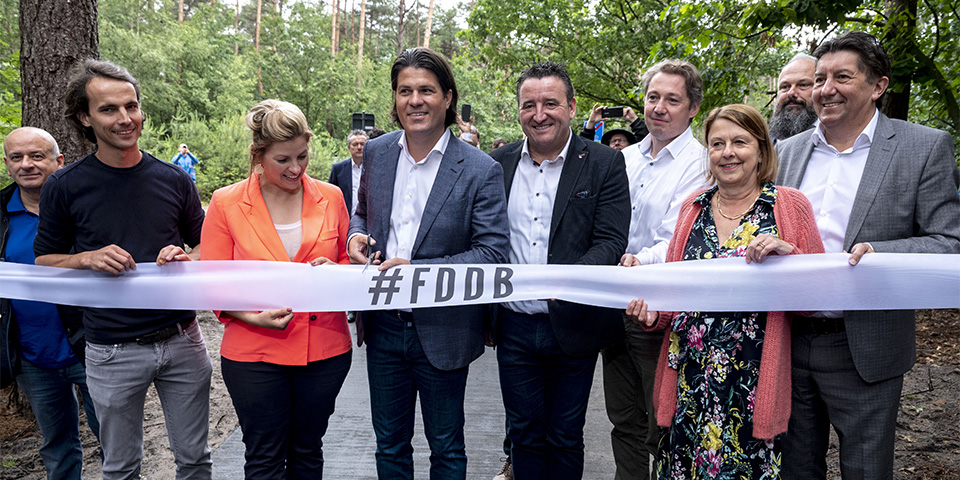
through the tops of the trees in Woodland.
Norway
Tourism Limburg found the inspiration for FDDB and FDHW - and soon also Cycling through the Heath (FDDH) - in Scandinavia. Igor Philtjens: "In Norway at the 'Scenic routes'. Along certain routes in Norway, interventions have been made in the landscape that allow visitors to experience the natural beauty even more. We want to bring our guests closer to the landscape without compromising or negatively impacting nature and the environment. This through interventions in art, design or architecture. Within Bosland, after a thorough site survey, the Pijnven was retained as the most suitable area for FDDB. The bridge had to be a logical link in the 'Cycle of Life' of Bosland, where you can experience the natural evolutions of the forest."
Corten steel bolts
Crucial to this story is respect for nature. Everything was prepared prefab in the factories. On site, we did not grind and weld," says Joost Van Dun. "Everything was brought in via a dirt road and, on site, a ring with a diameter of 8 m was allowed to be cleared for the route of the bridge. In the middle of the total workable ring - with a diameter of 100 m - a square was also allowed to be cleared to place the crane. So it was very important to figure out the way of working and placement very well in advance. We were certainly not allowed to build ourselves tight. The way to attach everything to each other also required some thought. You can't just stick a stainless steel bolt into Corten steel. That's why we had bolts made of corten steel specially brought over from America."
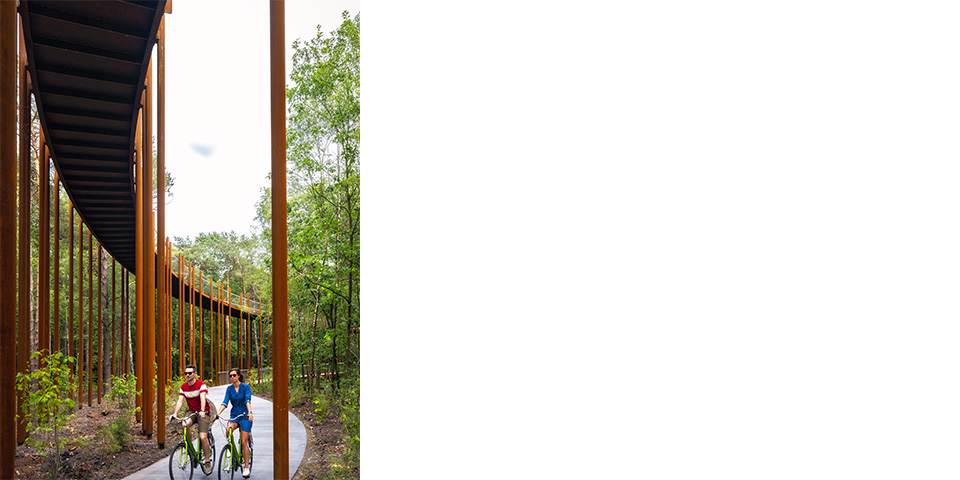
The best mileage
The FDDB project is part of "Cycling Synergy," the strategy by which Tourism Limburg is adding an extra layer of experience over the existing bicycle route network. In this way, Tourism Limburg continues to build the bicycle network of the future. "A few years ago, we went looking for innovative ideas linked to the cycling paradise. The craziest ideas came up, but we ended up focusing on our most important assets: our bicycle route network and our diverse landscapes. Enhancing the interaction of the cyclist, with nature and those landscapes, thus increasing the experience and adding meaning to these experiences was the goal. This gave us the idea to create innovative cycling experiences through water, through trees and through heath. And this, of course, in harmony with nature. The goal of the bicycle route network is not to create more kilometers, but to create the best kilometers," concludes Igor Philtjens.
